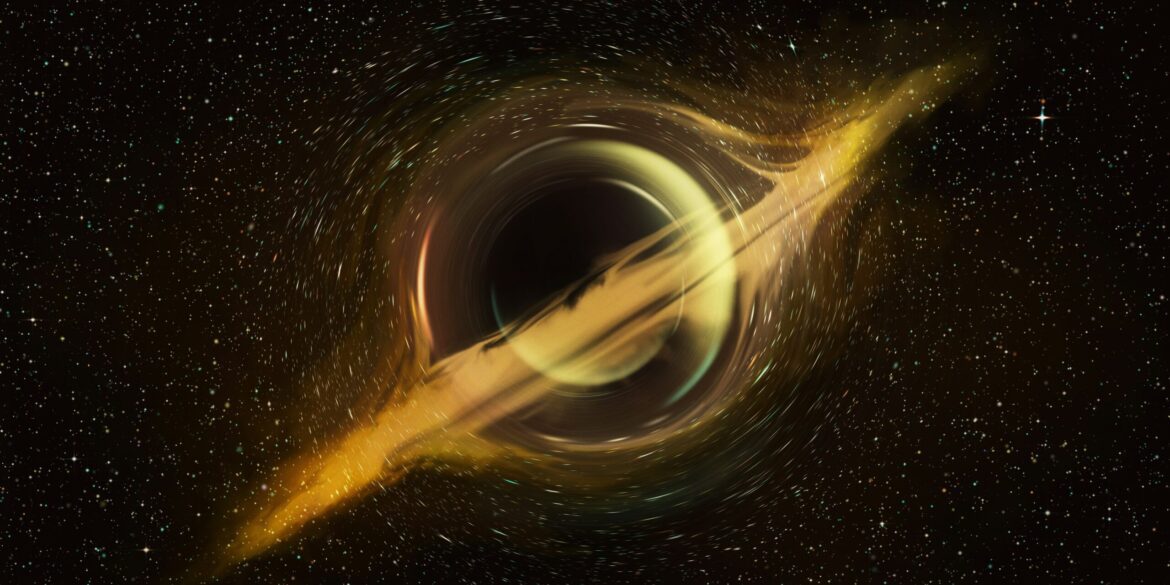In one of the most striking confirmations of black hole physics to date, scientists have reported a black hole merger that strongly validates Stephen Hawking’s famous area theorem. The event, detected in January 2025 by the Laser Interferometer Gravitational-Wave Observatory (LIGO) in partnership with other observatories, offered a clear and unusually precise view of how black holes behave when they collide. The results show that the final black hole’s surface area exceeded the combined surface areas of the two original black holes, precisely in line with Hawking’s prediction that the area of a black hole’s event horizon can never decrease.
The merger involved two massive black holes, one about 34 times the mass of the Sun and the other roughly 32 times the Sun’s mass. The violent collision occurred around 1.3 billion light-years away, and the resulting gravitational waves traveled across the universe before being picked up by detectors on Earth. When the data were analyzed, researchers determined that the resulting single black hole conformed exactly to what the area theorem predicts: its event horizon surface area was larger than the total surface area of the two black holes before the merger. This outcome was not surprising to physicists, but the clarity of the measurement provides one of the most solid pieces of observational evidence for a law that has long been considered a cornerstone of black hole mechanics.
Read Also: https://goodmorningus.com/u-s-dollar-strengthens-amid-global-economic-uncertainty/
What makes this event stand out is the extraordinary quality of the gravitational wave signal captured. Gravitational waves are notoriously faint, and even small disturbances can interfere with readings. Yet in this case, scientists were able to track the signal with remarkable precision across the entire sequence of the event. They could follow the inspiral phase, when the two black holes circled each other and drew closer; the moment of merger, when the two collapsed into one; and the so-called ringdown phase, when the new black hole settled into a stable state. During the ringdown, specific frequencies in the gravitational wave signal were isolated that are especially sensitive to the properties of the event horizon. These measurements allowed researchers to calculate the before-and-after surface areas with unprecedented accuracy.
This is more than just a technical achievement. For decades, Hawking’s area theorem has been a key element in the understanding of black holes, linking the physics of event horizons to broader laws of thermodynamics and relativity. Until recently, however, confirming such predictions was difficult, because black holes are invisible in traditional telescopes and can only be studied indirectly through their effects on nearby matter or through gravitational waves. With the advent of gravitational wave astronomy, physicists can now test ideas that were once purely theoretical, and this merger has provided one of the cleanest tests yet.
The implications extend beyond validating a single theorem. By showing that general relativity’s predictions hold true under extreme conditions, the findings give scientists greater confidence in the theory’s ability to describe strong gravitational fields. At the same time, the data help build the foundation for testing even deeper questions. For instance, researchers are interested in whether principles like the cosmic censorship conjecture and the links between black hole entropy and quantum mechanics also hold true in real-world observations. Events like this one move those inquiries from the realm of speculation toward concrete testing.
Looking ahead, observatories such as LIGO, Virgo, and KAGRA, along with upcoming facilities like the next-generation Cosmic Explorer and the European Einstein Telescope, are expected to detect many more black hole mergers of this quality or better. Each new event will add data that can be used to probe the laws of physics under conditions that cannot be reproduced on Earth. Scientists are particularly eager to examine mergers involving rapidly spinning black holes or black holes of very different masses, since these variations might test the limits of current theories. The growing catalog of observed black hole mergers will serve as a living laboratory for physics, expanding human understanding of both relativity and the nature of space-time itself.
The January 2025 detection marks a milestone in this effort. For now, it stands as one of the clearest demonstrations that Hawking’s area theorem is more than just an elegant mathematical idea—it is a law that nature appears to obey with precision, even in some of the most extreme environments in the universe. As the reach of gravitational wave astronomy continues to expand, it seems increasingly likely that many of the remaining mysteries about black holes will move from theory into testable reality.

